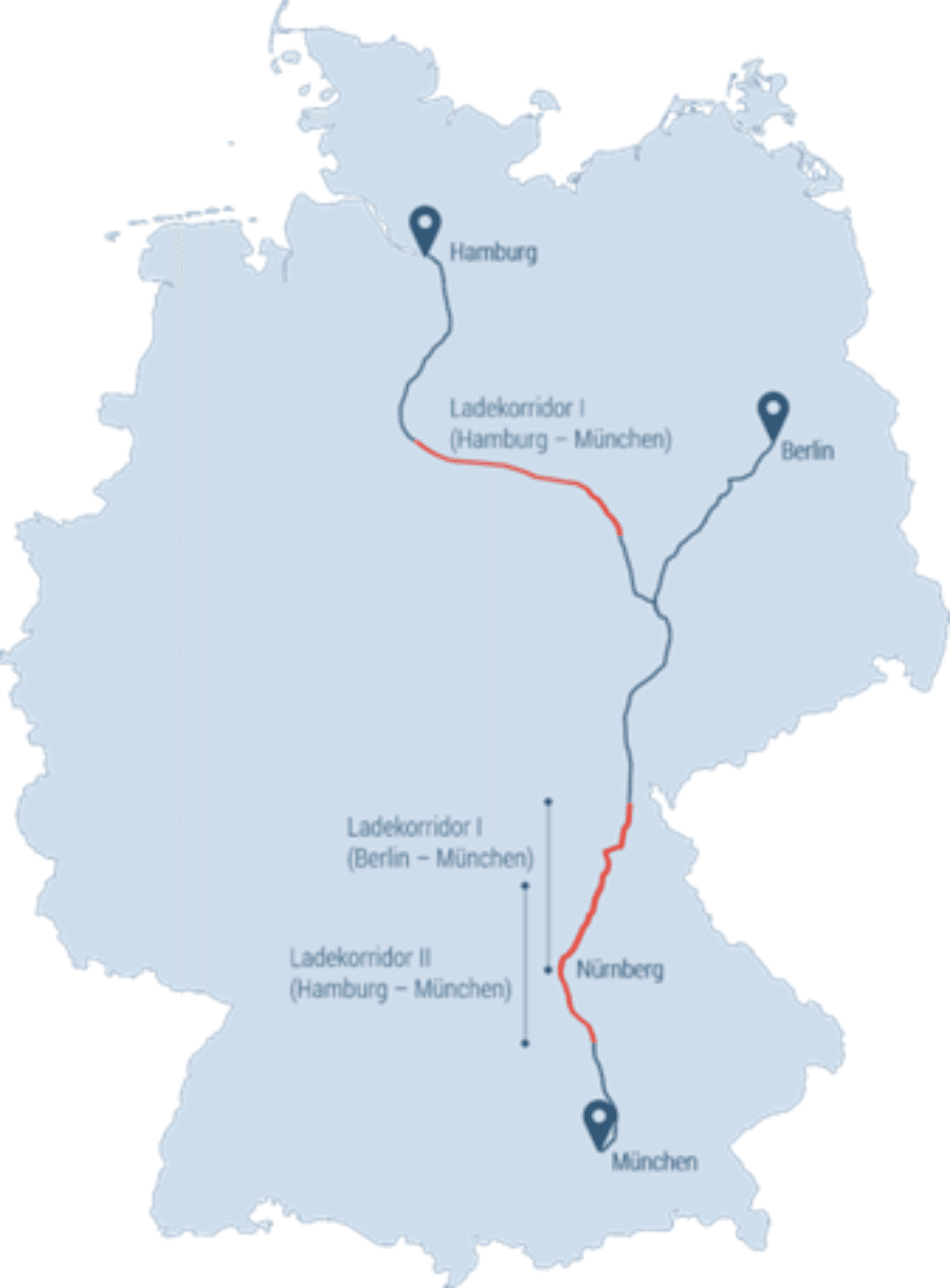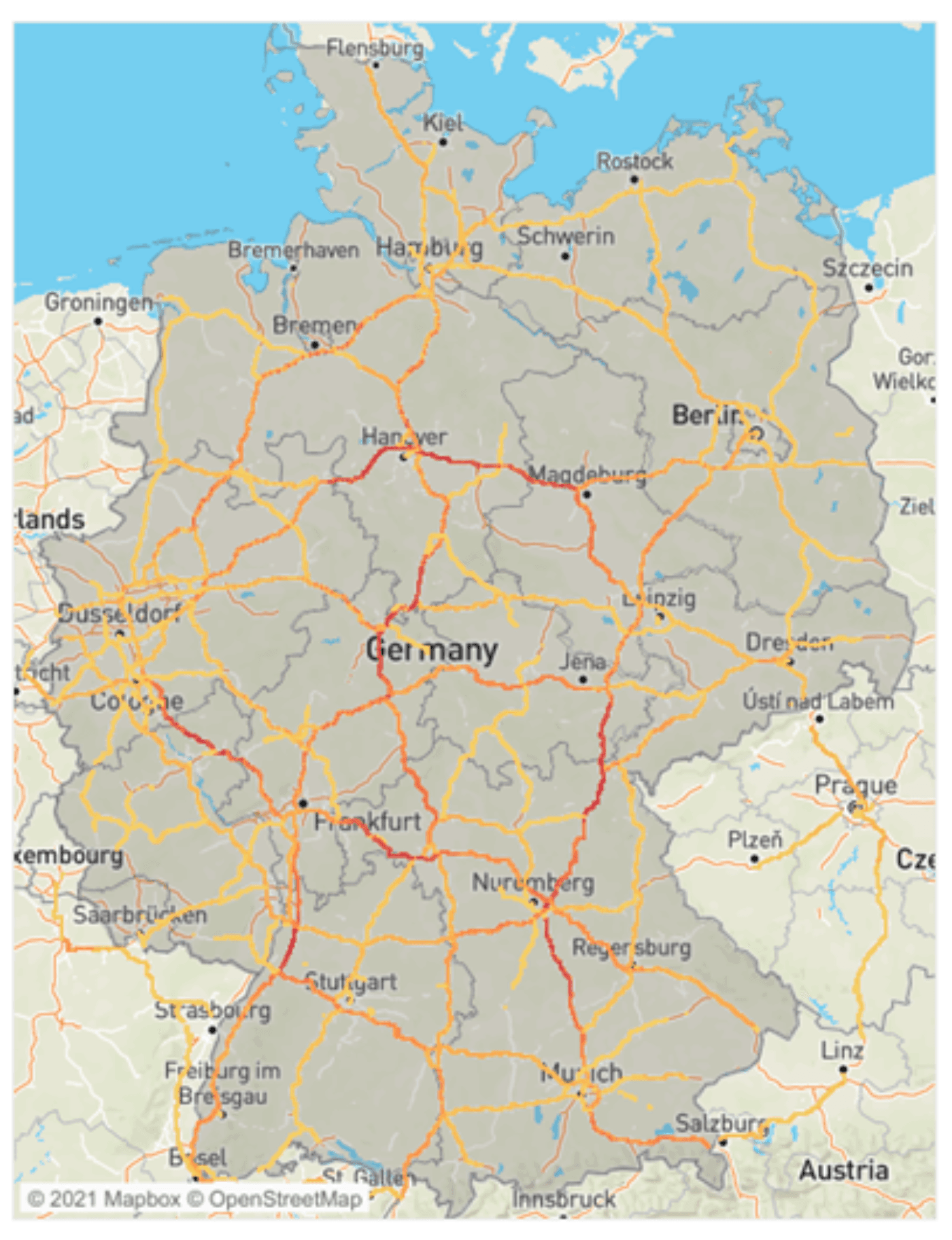Quick-charging infrastructure: VDA subsidiary AQI develops tool for smart expansion
Tool identifies hotspots for expansion throughout Germany
VDA subsidiary Automotive Quality Institute GmbH (AQI GmbH) has developed a tool that can identify the need for quick-charging points for electric cars along highways throughout Germany. It can help charging station operators and others expand the quick-charging infrastructure along highways and federal roadways.
This innovation focuses on the demand analysis for quick-charging points (>150 kW) on long-distance drives of at least 300 kilometers (approx. 186 miles) as the crow flies, as electric cars do not necessarily have to be charged for shorter distances. This is based on data from the Traffic Integration Prediction 2030.
The tool considers around 200,000 routes driven throughout Germany in one year, resulting in over 3 billion data points that are processed and evaluated with AI algorithms and statistical models in order to simulate charging behaviors of electric car users. The determination of the need for charging points on each route is based on charging corridors, meaning sections of road where the electric car can be charged. These corridors consider the limitations of the vehicle's reach as well as users' attempts to take as few charging breaks as possible.
The tool visually presents the charging corridors, as well as the many areas where the Germany-wide routes overlap. As a result, the hotspots - areas where the demand for quick-charging points is particularly high – become visible, allowing for recommendations for further quick-charging points to be made as well.
Cohesive monitoring of traffic
"Contrary to the shotgun principle, a charging station operator can use our tool to identify the actual hotspots and focus on these points when expanding the quick-charging infrastructure. The needs- and goal-based expansion will be much easier," explains Serge Elia, director of the project group for the tool's development.
"Our tool stands out for its cohesive monitoring of routes driven in Germany. But observation of traffic flows on individual sections is a secondary goal, because this may only identify locations where there is a lot of traffic but little demand for quick-charging opportunities," he continues. One example he provides is the Stadtautobahn A100 in Berlin, which experiences heavy traffic but is primarily used for urban commuting, which means the demand for quick-charging points is rather low.
Detailed analysis of the A9
AQI GmbH has also conducted a detailed analysis of the Autobahn A9. First, the charging demand was determined for each kilometer (every 0.6 miles), and then compared with the quick-charging points already installed along the A9. The tool can thus be used to see where additional quick-charging points are required along the A9 to cover future demand.



Press Office
Eva Siegfried
Team Lead Press Office & Spokesperson with focus on economics